Art & Exhibitions
A Spanish Arts Center Has Invited 50 Contemporary Artists to Pry Open the Legacy and Myth of Pablo Picasso
The varying responses from artists show the complexity and vastness Picasso's work and life.
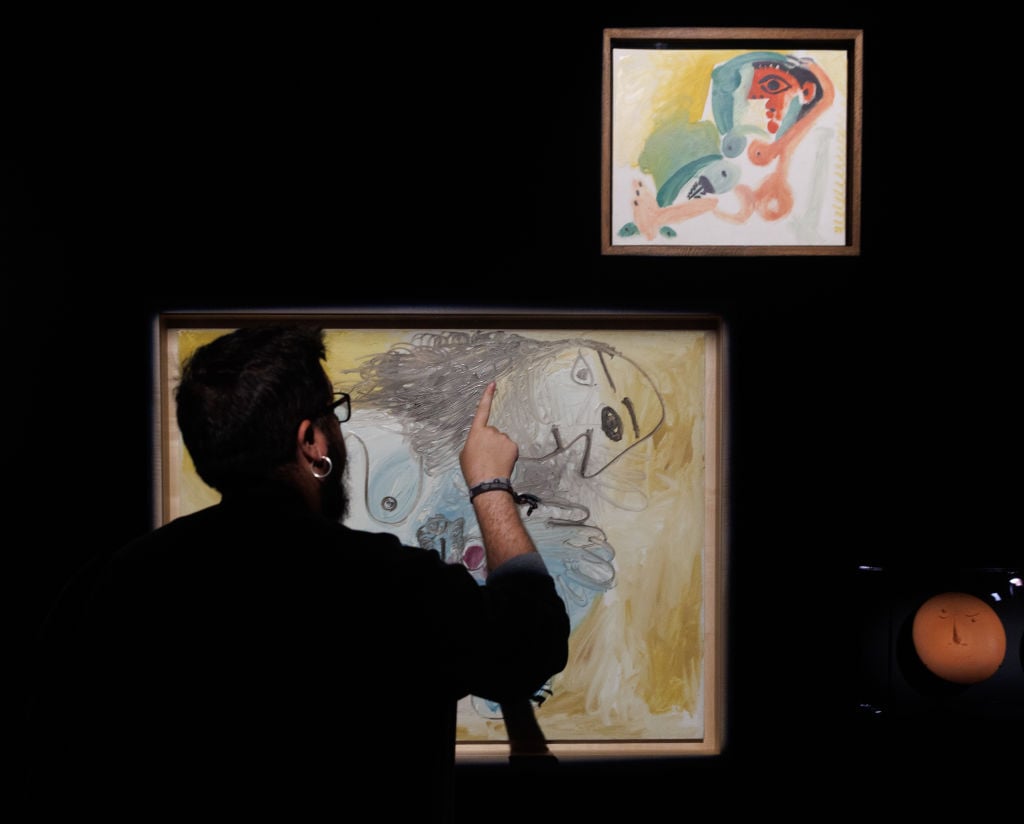
The varying responses from artists show the complexity and vastness Picasso's work and life.

Devorah Lauter

Two men slowly stripped off their clothes and folded them into a neat pile at the preview of “Picasso: Untitled” in Madrid’s La Casa Encendida on May 19. Reclining in the nude against a black, velvety bench at the center of the gallery, they took up a similar position to the woman depicted in Picasso’s 1964 painting on the opposite wall. They held the pose. Visitors stole glances, whispered, and snapped photos.
The performance by artist Maria Hassabi flipped Picasso’s infamous gaze on the women he painted—often depicted as bodies broken into disjointed, monstrous figures—and aimed it at men. Hassabi is one of 50 other contemporary artists invited to re-title and write a new description of a Picasso work, made between 1963 and 1973. On view until January 7, 2023 the show is part of a bonanza of international exhibitions commemorating 50 years since Picasso’s death in 1973; shows celebrate and, on a few notable occasions, skewer the artist.
Picasso’s controversial portrayals and treatment of the women during in his lifetime have been under new scrutiny since the #MeToo movement. Likened to Harvey Weinstein by some, the legacy of the Modern master who famously said, “there are only two types of women: goddesses and doormats,” is also under fire for his use of African art, who some perceive as appropriated.
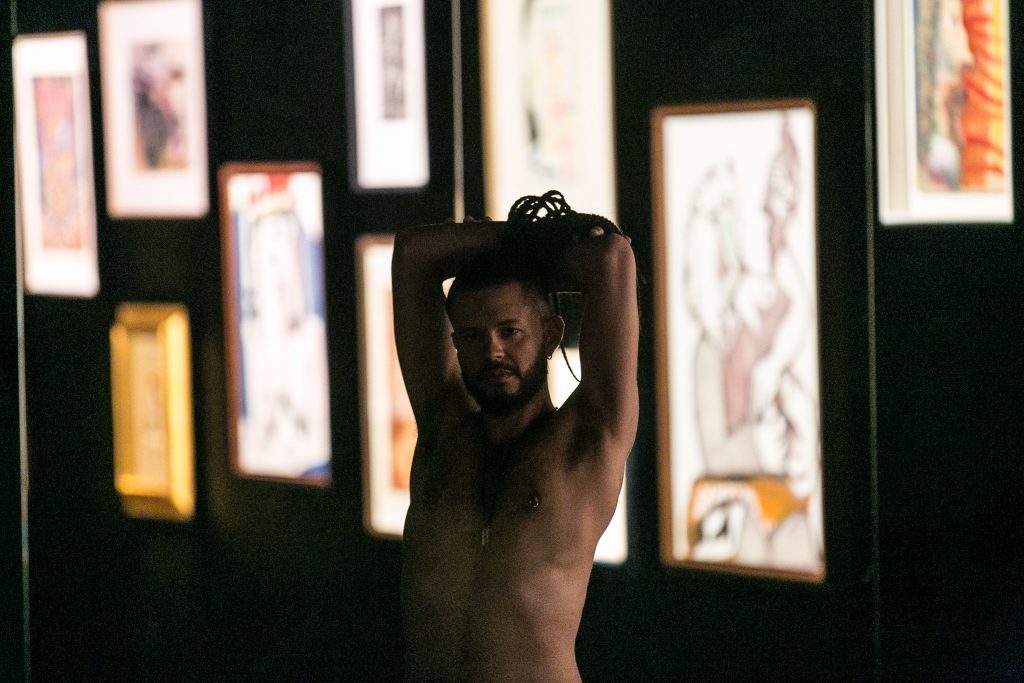
Performance by Maria Hassabi. Photo: La Casa Encendida Estudio Perplejo
Even the team at La Casa Encendida, a contemporary art space known for its progressive, feminist programming, had real doubts about featuring the icon. “In the beginning at least, Picasso didn’t seem like a good fit for this institution,” Lucia Casani, its director, told Artnet News. Reasons included a preference for working with contemporary “artists who defend diversity, feminism.” She noted, however, that “it was important, in a moment of a complicated trend of cancellation culture, not to directly cancel, but to open the conversation with as many voices as possible.” The results have “been really interesting,” she said.
A collaboration with the Fundación Almine y Bernard Ruiz-Picasso (FABA) ensued, thanks to urging from the late former Spanish minister of culture, José Guirao. International artists spanning generations and genders accepted the show’s invitation, including the likes of Esther Ferrer, Adrián Villar Rojas, Camille Henrot, the collective Black Quantum Futurism, and Ryan Gander, to name a few.
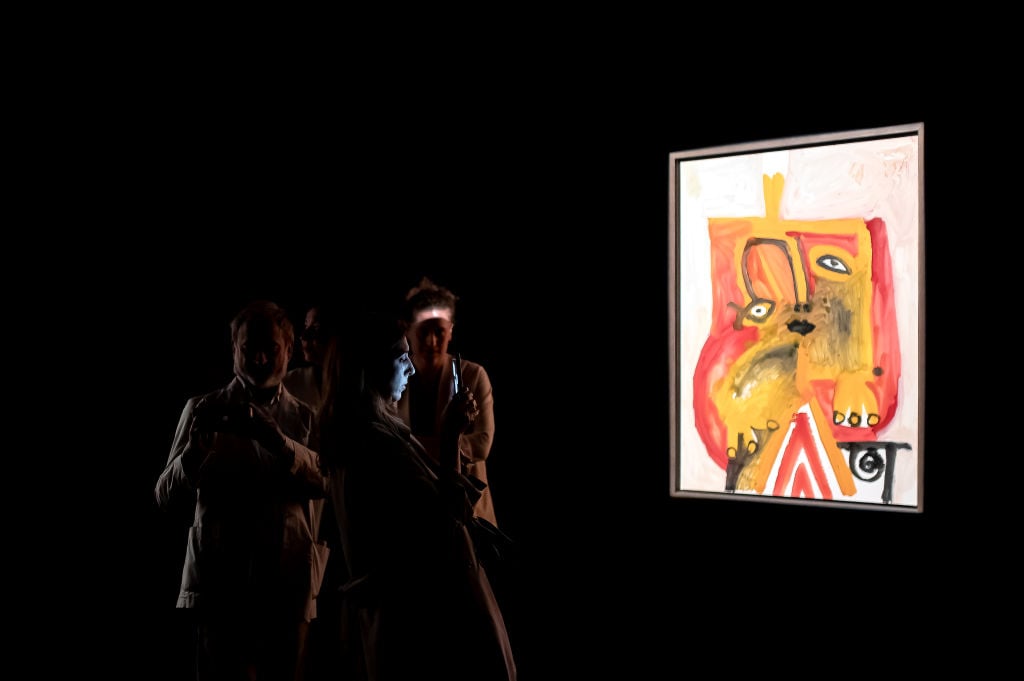
Visitors observe an artwork during the presentation of the exhibition “Picasso: Untitled” at La Casa Encendida on May 18, 2023, in Madrid, Spain. (Photo by Samuel de Román/Getty Images)
Though fallen far from his once unquestioned, God-like status, the artist also remains a household name, pulling in record sales at auction, and the subject of regular shows, even outside this year’s commemoration. Calls for cancellation aside, this leaves many in the art wondering: Does the world need another Picasso exhibition?
“No,” said Catalan curator Eva Franch i Gilabert, speaking at the opening of the “Untitled: Picasso” exhibition, which she curated. “Unless [it] is helping us articulate and provoke the right types of questions and answers we need in a time when we are trying to think through … issues of equality, gender, violence, and appropriation.”
Given that Picasso hits on many of the pressure points of the 20th century’s male and European-dominated art history, the artist, as a result “allows the institution and ourselves to talk about these issues that artists themselves believe are important,” said Franch i Gilabert.
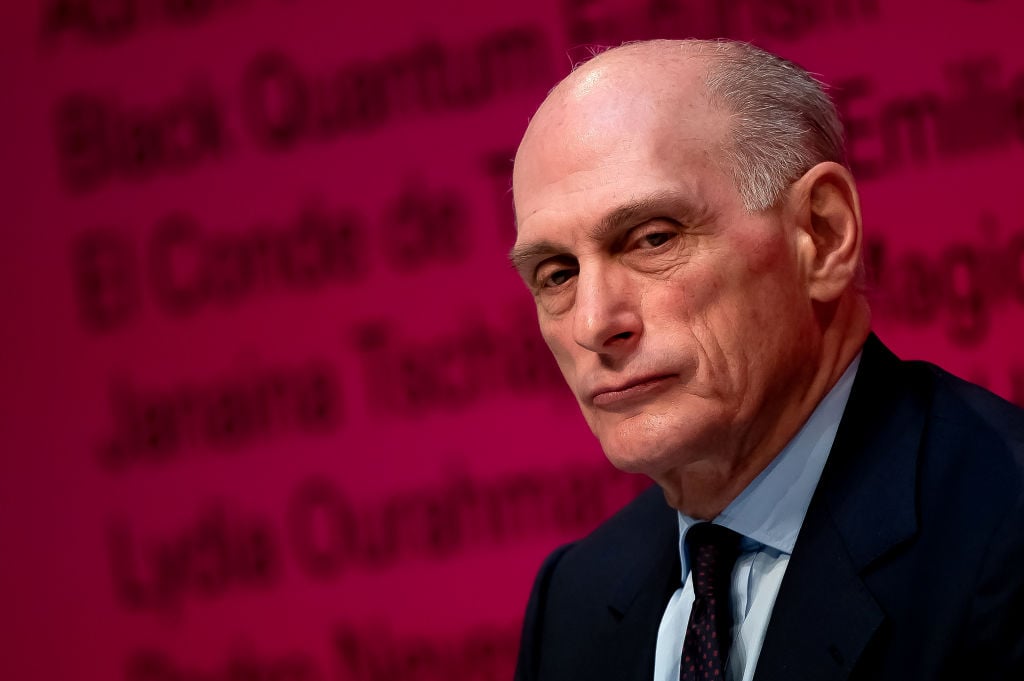
Bernard Ruiz-Picasso during the press conference for the presentation of the exhibition “Picasso: Untitled” at La Casa Encendida on May 18, 2023, in Madrid, Spain. (Photo by Samuel de Román/Getty Images)
The exercise comes amid similar efforts to reach younger audiences, such as the Paris Picasso museum’s colorfully busy rehang, or Hannah Gadsby’s feminist critique in the Brooklyn Museum’s exhibition titled, “It’s Pablo-matic” that opens on June 2.
At La Casa Encendida, Picasso’s works glow under warm spotlights, bringing his palette of colors to brilliant life. They are free of any labels or text, in otherwise dimly lit, cocoon-like black-walled and carpeted rooms. Twelve of the works from his late period, which was until recently under-valued, have never been shown to the public. These works from the last decade of his life were long-considered too hastily executed as the artist battled against the clock. Yet that gestural freedom is also what gives these works their precursory, contemporary strength.
On the opposite wall, are metallic panels mirroring the paintings. Here one finds—and it’s a bit of a painstaking search—the new titles and descriptions by contemporary artists. They vary in their quality, but ultimately, offer a kind of survey of where Picasso stands with a large swath of today’s socially engaged and conceptual creators.
Most artists, to the surprise of the exhibition organizers, did not reduce or dismiss the artist. Participants appear rather to have been largely inspired to engage with Picasso’s work in a variety of ways, offering their close, critical reading of pieces ranging from ceramics to paintings and etchings.
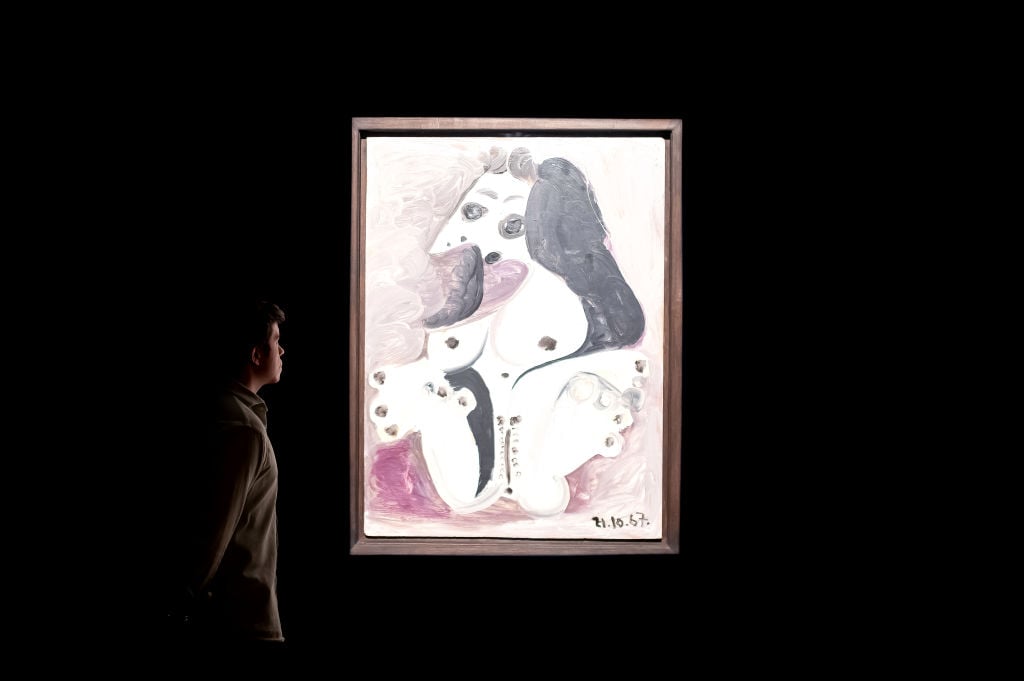
A visitor observes an artwork during the presentation of the exhibition “Picasso: Untitled” at La Casa Encendida on May 18, 2023, in Madrid, Spain. (Photo by Samuel de Román/Getty Images)
New interpretations of Picasso, “are inevitable in our century,” and part of a healthy process, said artist Esther Ferrer, who was present at the opening. Born in 1937, she felt Picasso could not be limited to the female abuser who depicted his muses as hacked up bodies, because “there is also this image of a strong woman, the matron who runs on the beach.” That, or the “tortured, raped woman,” she added.
Plenty addressed the artist’s tormented relationship with women and use of African art, through texts more easily absorbed in the comprehensive catalog, which includes the original titles and artist biographies, rather than the lengthy wall readings, displayed at a distance from the artworks.
“Is this a depiction of one of the wives or girlfriends he treated like shit? I don’t get the Picasso thing. The big kerfuffle around what he did with Les Demoiselles d’Avignon—which is basically an appropriation of African imagery,” writes Korean American artist Johanna Hedva.
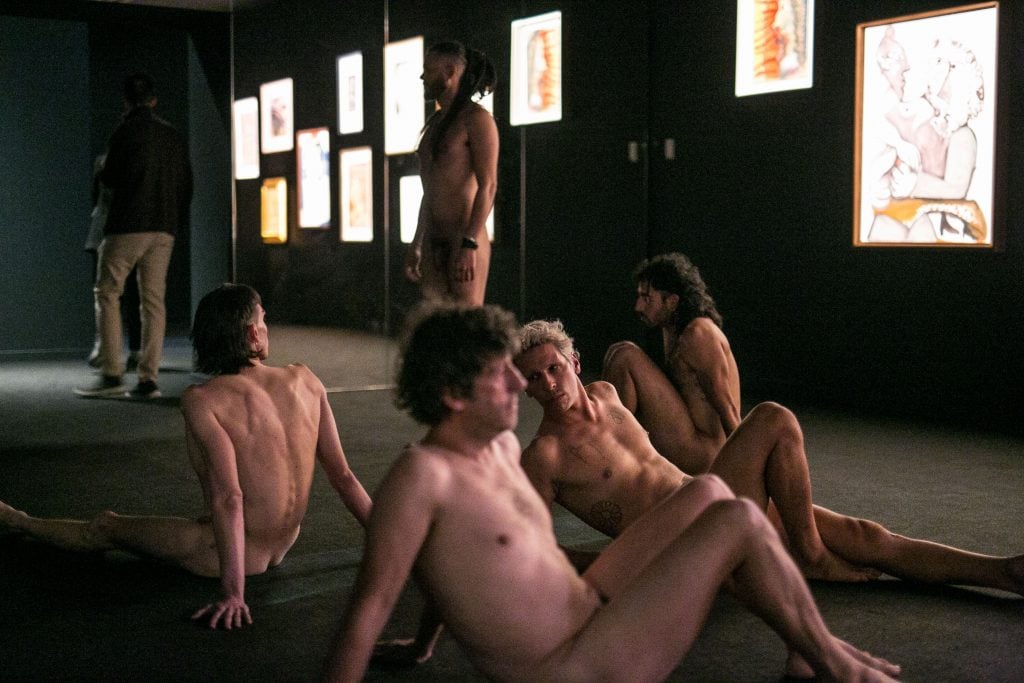
Performance by Maria Hassabi. Photo: La Casa Encendida Estudio Perplejo
And while commentary like Hedva’s were in the minority, they were welcomed by organizers, including Picasso’s grandson, Bernard Ruiz-Picasso, the son of Picasso’s first child, Paulo, with Picasso’s first wife, Olga Khokhlova. Ruiz-Picasso co-runs FABA with his wife, the art dealer Almine Rech Ruiz-Picasso, and works to preserve his grandfather’s legacy.
In contrast to cancel culture that is an “almost irrational extremism,” Ruiz-Picasso said he “hoped, within the framework of this [50-year] celebration, to address questions,” surrounding his grandfather, which will “allow us to move forward.”
It’s unclear how much an ultimately predictable contribution like Hedva’s moves things forward, or initiates hope for dialog. But it does offer a kind of litmus test for where creators stand today. And even among some of the most radical, socially engaged participating artists, Picasso is given a balanced look, via critical readings and stream-of-consciousness associations that address his complicated legacy in tandem with his enduring, creative force.
Hassabi is one such example. “I don’t like thinking in terms of revenge,” she said after her performance. “It’s a different time now, and men are excited to be looked at—they always were, but now more,” she added, noting that she believed Picasso’s relevance was a classic mainstay, though she welcomed new viewpoints and criticism.
World-renowned Picasso expert Carmen Giménez, who was also present at the opening, went further, reproaching the current, “terrible,” trends in Picasso-bashing, arguing that his work leaves “space for everyone.” Despite having several opportunities to meet the artist, Giménez said she had preferred not to, because of his reputation as a womanizer, and her interest in other contemporary artists. “I did not want to be involved with those kinds of situations,” she said. Unlike so many others at the time, “I didn’t see him as a God—I tried to avoid him,” she added.
“Choosing to live with Picasso was a serious decision,” acknowledged Ruiz-Picasso, who never knew his grandmother, a woman said to have been heartbroken by the death of her family members who were left behind in Russia and killed during the wars of her generation. “If one didn’t know any better, we could very easily think that Picasso was indeed a bastard, … a killer of women [two of the women with whom he had lived committed suicide after his death],” said Ruiz-Picasso. “But I know, and saw how he was with people, and how they felt he had this positive energy. He always said: ‘You want to live? You need to make the most of it. You have to live now.”
“Picasso: Untitled” is on view at Madrid’s La Casa Encendida until January 7, 2024
More Trending Stories:
A Sculpture Depicting King Tut as a Black Man Is Sparking International Outrage